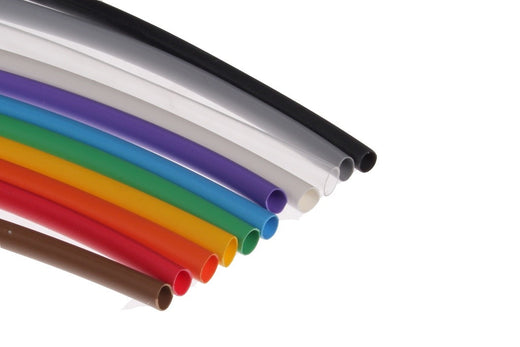
Maximize Insulation: The Best Tubing for Waterproofing
When it comes to protecting electrical components, wiring, and cables from the elements, insulation and waterproofing are crucial. Whether it’s for marine applications, outdoor electrical installations, or rugged industrial environments, ensuring that your electrical components stay safe from water, dust, and chemicals is vital to maintain performance and longevity. One of the most effective tools for achieving this level of protection is heat shrink tubing.
These products offer an advanced material that combines both insulation and waterproofing in a single, easy-to-apply solution. Its design, which includes an inner adhesive layer, provides enhanced protection against water, chemicals, dust, and physical damage. The following article explains how it works, why it’s so effective, and how it can be used in a variety of applications to keep your electrical systems safe and operational.
Specialized Tubing
Thermally activated shrink tubes are a specialized type of tubing that have two distinct layers. The outer layer is typically made of a durable, flexible polymer material (often polyolefin), which is designed to shrink when exposed to heat. This outer layer provides mechanical protection and is resistant to abrasion, UV radiation, and a range of chemicals.
The inner layer is where the magic happens. It consists of a hot-melt adhesive that, when heated, flows and forms a tight seal around the cable or wire. This adhesive layer is what gives the product its waterproofing and chemical-resistant properties. As the tubing shrinks and the adhesive melts, it bonds tightly to the underlying surface, creating a waterproof barrier that effectively prevents moisture, dust, and contaminants from entering the insulated area.
Waterproofing and Insulation

The combination of the heat-shrinking polymer and adhesive creates a double layer of protection, which provides a host of benefits in a wide range of environments. Here’s how it works:
Waterproofing: The inner adhesive layer forms a waterproof seal around the cable or wire, preventing water from penetrating the tubing. This is particularly useful for applications where components may be exposed to rain, moisture, or even submersion in water. The adhesive bonds directly to the surface of the cable, creating an impermeable barrier that keeps out water and protects the underlying components from corrosion and short-circuiting.
Dust and Contaminant Resistance: In environments where dust, dirt, or other contaminants are prevalent—such as manufacturing plants or outdoor construction sites—the inner adhesive creates a tight seal that keeps these particles from entering and damaging the cables or wires. The outer layer of the tubing also resists abrasion, so it can withstand contact with rough surfaces without compromising the integrity of the seal.
Chemical Resistance: The adhesive layer is also designed to resist a range of chemicals, including oils, solvents, and acids. This makes it ideal for use in automotive, industrial, and marine environments, where wiring may be exposed to harsh chemicals that could degrade other types of insulation.
Durability and Longevity: Both the inner adhesive and outer polymer layers are engineered to withstand extreme temperatures, making it suitable for applications in high or low-temperature environments. Whether the tubing is exposed to freezing cold temperatures or high heat, it maintains its integrity and continues to protect the wires from the elements.
Applications
Thermal sleeves are used in a variety of industries and applications where protection from water, dust, and chemicals is crucial. Some of the most common uses include:
Marine and Boating: Marine environments are often harsh, with exposure to saltwater, high humidity, and temperature fluctuations. This tubing is ideal for wiring in boats, ships, and other watercraft, as it provides the waterproofing needed to protect electrical systems from corrosion.
Automotive and Transportation: In the automotive industry, these products are used to insulate and waterproof wiring in vehicles, trucks, and trailers. It provides extra protection against chemicals like oil, gas, and road salts, all of which can cause wires to corrode or short-circuit if left exposed.
Outdoor and Industrial Use: For outdoor electrical installations, such as solar panels, irrigation systems, or outdoor lighting, tubing offers an effective solution to prevent water and dust from entering the wires. Its ability to resist UV rays also ensures that the tubing won't degrade in direct sunlight.
Electronics: In electronics manufacturing, it is used to provide insulation and moisture protection for delicate components. It’s particularly useful for protecting wires and connectors in equipment exposed to humid or wet conditions.
Advantages
Enhanced Protection: The dual-layer construction of this tubing provides superior protection against a wide range of environmental hazards, from moisture to physical damage.
Simplified Installation: This product is easy to apply. It can be shrunk to fit snugly around the wires and components using a heat gun or oven. The adhesive layer melts and forms a tight bond, so the tubing stays securely in place without the need for additional adhesives or sealing methods.
Long-Term Reliability: Unlike some coatings or tapes that may wear down or peel off over time, it provides a long-lasting, durable seal that ensures continuous protection. This reduces the need for frequent maintenance or replacement.
Cost-Effectiveness: Given its ability to provide both insulation and waterproofing in one product, the tubing can be a cost-effective solution for many applications. It helps reduce the need for additional sealing materials or waterproofing techniques.
